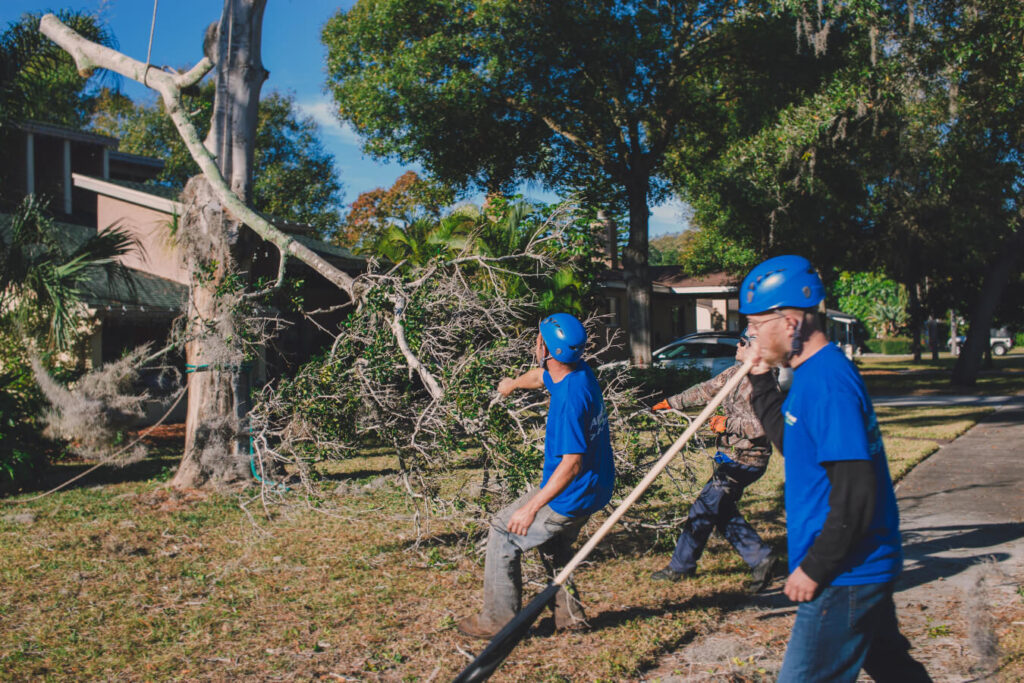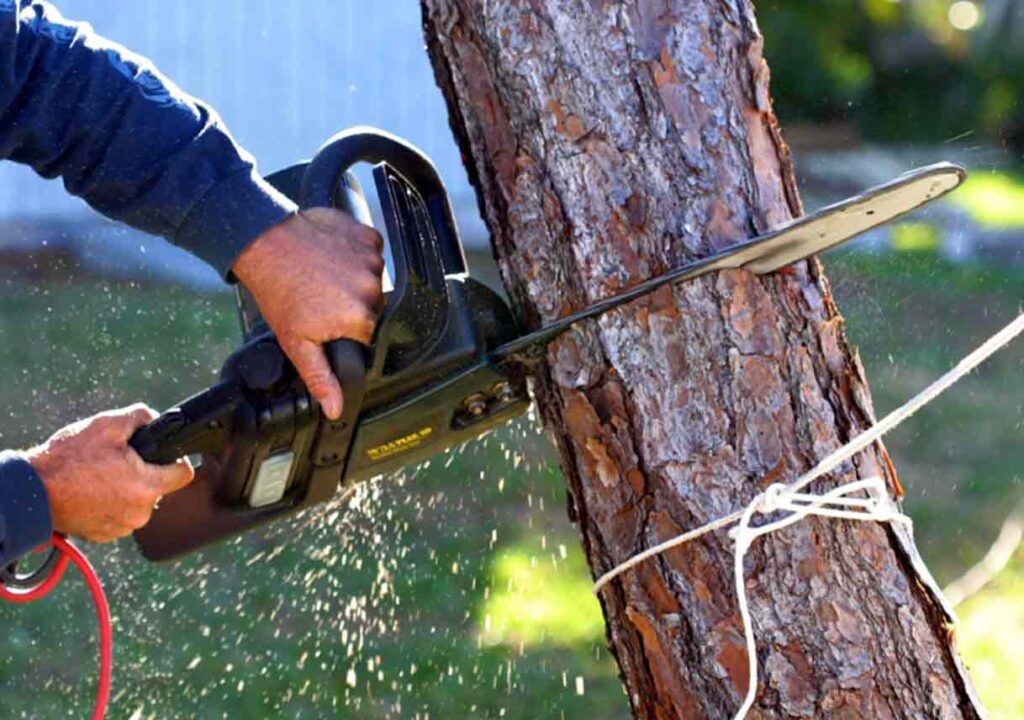Trees can be a beautiful addition to any property, enhancing its aesthetic appeal and providing shade and fresh air. However, there are times when tree removal becomes necessary. Whether it’s due to disease, damage, or interfering with structures, removing a tree requires expert knowledge and equipment. In this article, we will take an in-depth look at the comprehensive process of expert tree removal and why it is essential to hire professionals for this task.
Understanding the Need for Professional Tree Lopper
While some may consider tree loppers near me as a cost-saving measure, it comes with significant risks and limitations. Let’s explore the potential dangers and advantages of hiring a professional tree removal service.
Risks of DIY Tree Lopping
Removing a tree without the necessary expertise can lead to accidents and property damage. Trees are heavy and can have unpredictable falling patterns, especially if they are compromised by disease or structural issues. Additionally, inadequate cutting techniques can result in tree limbs breaking off and causing injury.
But the risks don’t stop there. DIY tree lopping can also harm the environment. Improper disposal of tree debris can lead to air pollution and contribute to the spread of diseases or pests to other trees in the vicinity. In fact, some invasive species can hitch a ride on the discarded branches and find a new home in nearby healthy trees, wreaking havoc on the ecosystem.
Benefits of Hiring a Professional
By engaging professional tree removal services, property owners can reap numerous benefits. Certified arborists have extensive training in assessing tree health and structural stability, ensuring that only trees in need of removal are targeted. They can identify signs of disease, decay, or pest infestations that may not be apparent to the untrained eye.
Moreover, professional tree removers possess specialized equipment and techniques to safely and efficiently carry out the task, minimizing the risk of accidents and damage to property. They have access to cranes, ropes, and pulleys that allow them to carefully control the tree’s descent, ensuring it falls in the desired direction without causing harm to nearby structures or landscapes.
Furthermore, hiring professionals for tree removal often includes comprehensive cleanup and debris disposal, leaving the property in a clean and tidy state. They will not only remove the felled tree but also clear away any smaller branches, leaves, or wood chips that may have accumulated during the process. This saves property owners the hassle of dealing with the aftermath of the removal process, allowing them to enjoy their newly cleared space without any additional effort.
So, while DIY projects can be fulfilling and cost-effective in many areas, when it comes to tree removal, it’s best to leave it to the professionals. Their expertise, equipment, and commitment to safety and environmental responsibility ensure that the job is done right, without putting anyone or anything at risk.
The Initial Assessment: What to Expect
Before commencing the tree removal process, a thorough assessment is necessary. Qualified arborists will evaluate tree health and stability, as well as the surrounding environment, to minimize potential risks during removal.
Identifying Tree Health and Stability
During the assessment, arborists inspect the tree for signs of disease, decay, or structural weaknesses. They evaluate factors such as root health, crown condition, and any presence of pests or fungi. This meticulous examination allows them to determine the overall health and stability of the tree, providing valuable insights into its ability to withstand external forces.
Arborists are trained to identify subtle signs of distress that may not be immediately apparent to the untrained eye. By carefully observing the tree’s physical appearance and conducting various tests, such as sounding the trunk or assessing the presence of hollow cavities, they can accurately assess its structural integrity. This comprehensive evaluation helps them make informed decisions regarding the necessity of removal or the potential for implementing alternative measures to preserve the tree’s health.

Evaluating the Surrounding Environment
Assessing the surrounding environment is crucial to avoid damage to nearby structures, power lines, or other trees. Professionals take into account factors such as the tree’s height, lean, and potential falling direction. By carefully considering these variables, arborists can develop a strategic plan for the removal process, ensuring minimal impact on the surroundings.
Additionally, arborists assess the soil condition and topography surrounding the tree. This evaluation helps them determine the potential impact of the removal process on the stability of the ground and any potential erosion risks. By understanding the interplay between the tree and its environment, arborists can implement appropriate measures to mitigate any negative consequences.
The Tree Removal Process: Step by Step
Preparation and Safety Measures
Prior to tree removal, professionals take meticulous steps to ensure a smooth and safe operation. The first order of business is preparing the site. This involves clearing the area of any obstructions that may hinder the process and placing safety barriers to protect nearby property and individuals. These safety barriers act as a shield, preventing any accidental damage that may occur during the tree removal process.
As the professionals gear up for the task at hand, they don their safety gear, which includes helmets and harnesses. These protective measures are not taken lightly, as they play a crucial role in safeguarding the arborists throughout the entire process. With their safety gear in place, the professionals are ready to tackle the tree removal with confidence and expertise.
Cutting Techniques and Equipment
When it comes to cutting down a tree, precision is key. Professional arborists employ specialized cutting techniques that have been honed through years of experience. These techniques allow them to efficiently remove the tree in sections, ensuring controlled dismantling and minimizing the risk of damage to property and surrounding trees.
Equipped with chainsaws, cranes, and ropes, the arborists skillfully navigate the tree’s branches, carefully cutting and lowering them to the ground. The use of cranes provides an added layer of control, allowing the arborists to safely maneuver heavy branches and tree sections. This meticulous process ensures that the tree is removed with the utmost care, leaving behind a clean and unscathed environment.
Dealing with the Tree Stump
Once the tree has been successfully removed, attention shifts to the remaining stump. The professionals have a few options when it comes to dealing with this stubborn reminder of the tree’s existence. One option is stump grinding, a technique that involves using specialized machinery to grind the stump into small wood chips. This method completely removes the stump, leaving no trace behind.
However, some property owners may have a different vision for the stump. They may choose to repurpose it as an element of their landscape, transforming it into a unique focal point or a platform for decorative elements. In such cases, the professionals can leave the stump behind, ensuring it is cut to a safe height and shaped to fit the desired purpose.
It is important for property owners to discuss their stump removal preferences with the tree removal service. This way, the professionals can provide tailored advice and recommendations based on the specific needs and desires of the property owner.
Post-Removal Cleanup and Debris Disposal
Importance of Thorough Cleanup
Once the tree and stump have been removed, experts conduct a thorough cleanup of the site. This includes removing branches, leaves, and other debris. Effective cleanup ensures the aesthetics of the property are restored and reduces the risk of tripping hazards.
During the cleanup process, the professionals meticulously inspect the area to ensure no small twigs or fragments are left behind. They understand that even the tiniest remnants can detract from the overall appearance of the landscape. By taking the time to remove all debris, they leave the property looking pristine and well-maintained.
Additionally, the cleanup process involves raking and leveling the ground to eliminate any unevenness caused by the removal process. This attention to detail ensures that the area is safe for walking and prevents any potential accidents or injuries.

Environmentally Friendly Disposal Methods
Professional tree removal services often have environmentally friendly disposal methods for tree debris. They may chip the branches and use the wood chips for mulching or recycling. This minimizes waste and promotes sustainability.
Moreover, these experts understand the importance of preserving the natural environment. In line with their commitment to eco-friendly practices, they may also separate the debris into different categories for proper disposal. For instance, they may separate organic materials from non-organic ones, ensuring that each type is disposed of in the most environmentally responsible way.
Furthermore, some tree removal companies collaborate with local recycling centers or composting facilities to ensure that the tree debris is repurposed effectively. By doing so, they contribute to the circular economy and reduce the burden on landfills.
Restoration and Landscaping After Tree Removal
Assessing the Impact on Your Landscape
Removing a tree can significantly impact the overall landscape of your property. After tree removal, it is important to assess the changes and consider restoration options. Consulting with a professional landscaper can help determine suitable replacements and strategies to enhance the aesthetic appeal of your property.
When assessing the impact of tree removal on your landscape, it is crucial to consider not only the visual aspect but also the ecological impact. Trees play a vital role in the ecosystem, providing shade, shelter, and habitat for various species. Their removal can disrupt the delicate balance of your outdoor environment. A professional landscaper can guide you in selecting new trees that not only beautify your property but also contribute to the ecological health of your surroundings.
Options for Landscape Restoration
Various options exist for landscape restoration after tree removal. Property owners can opt for planting new trees that better suit the available space and desired aesthetic. Alternatively, they can explore other landscaping features such as flower beds, shrubs, or decorative elements to complement the remaining greenery.
When choosing new trees for your landscape, it is essential to consider factors such as soil conditions, sunlight exposure, and the overall design of your outdoor space. A professional landscaper can assist you in selecting tree species that thrive in your specific environment and complement the existing vegetation. By carefully planning the placement and variety of new trees, you can create a harmonious landscape that not only compensates for the loss but also enhances the overall beauty and functionality of your property.
Moreover, landscape restoration after tree removal offers an opportunity to introduce new elements that can transform your outdoor space into a captivating oasis. Consider incorporating flower beds bursting with vibrant colors or ornamental shrubs that add texture and dimension to your landscape. Additionally, decorative elements such as statues, fountains, or pathways can create focal points and enhance the overall ambiance of your property.
In conclusion, the process of restoring your landscape after tree removal is a chance to reimagine and revitalize your outdoor space. By consulting with a professional landscaper and carefully considering your options, you can create a landscape that not only compensates for the loss but also exceeds your expectations. Remember, the removal of a tree is just the beginning of a new chapter in your landscape’s story, and with the right guidance, it can be a story of growth, beauty, and harmony.
More to read: Understanding the Long-Term Advantages of Stump Grinding Services
